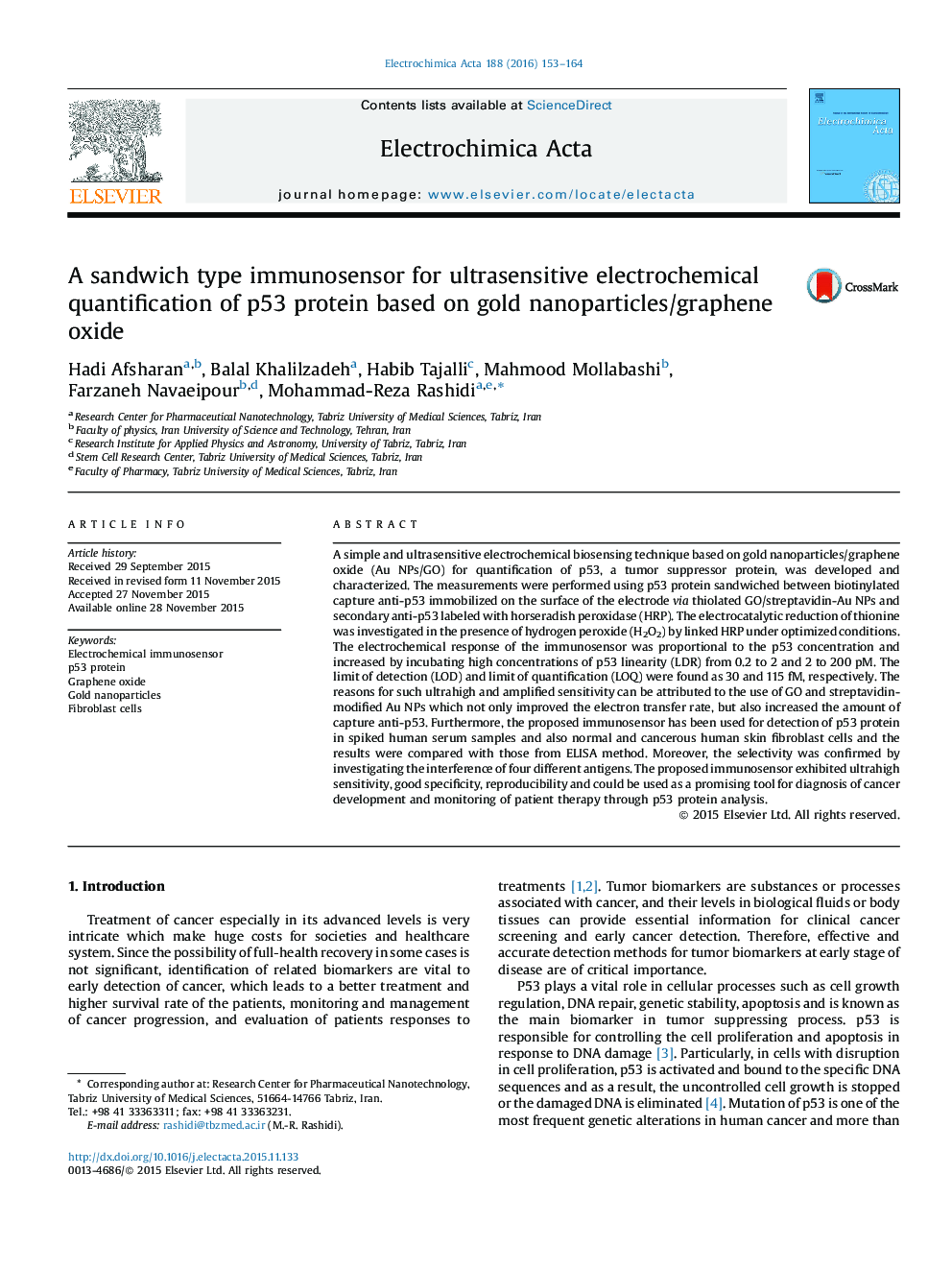| Article ID | Journal | Published Year | Pages | File Type |
|---|---|---|---|---|
| 183343 | Electrochimica Acta | 2016 | 12 Pages |
A simple and ultrasensitive electrochemical biosensing technique based on gold nanoparticles/graphene oxide (Au NPs/GO) for quantification of p53, a tumor suppressor protein, was developed and characterized. The measurements were performed using p53 protein sandwiched between biotinylated capture anti-p53 immobilized on the surface of the electrode via thiolated GO/streptavidin-Au NPs and secondary anti-p53 labeled with horseradish peroxidase (HRP). The electrocatalytic reduction of thionine was investigated in the presence of hydrogen peroxide (H2O2) by linked HRP under optimized conditions. The electrochemical response of the immunosensor was proportional to the p53 concentration and increased by incubating high concentrations of p53 linearity (LDR) from 0.2 to 2 and 2 to 200 pM. The limit of detection (LOD) and limit of quantification (LOQ) were found as 30 and 115 fM, respectively. The reasons for such ultrahigh and amplified sensitivity can be attributed to the use of GO and streptavidin-modified Au NPs which not only improved the electron transfer rate, but also increased the amount of capture anti-p53. Furthermore, the proposed immunosensor has been used for detection of p53 protein in spiked human serum samples and also normal and cancerous human skin fibroblast cells and the results were compared with those from ELISA method. Moreover, the selectivity was confirmed by investigating the interference of four different antigens. The proposed immunosensor exhibited ultrahigh sensitivity, good specificity, reproducibility and could be used as a promising tool for diagnosis of cancer development and monitoring of patient therapy through p53 protein analysis.
